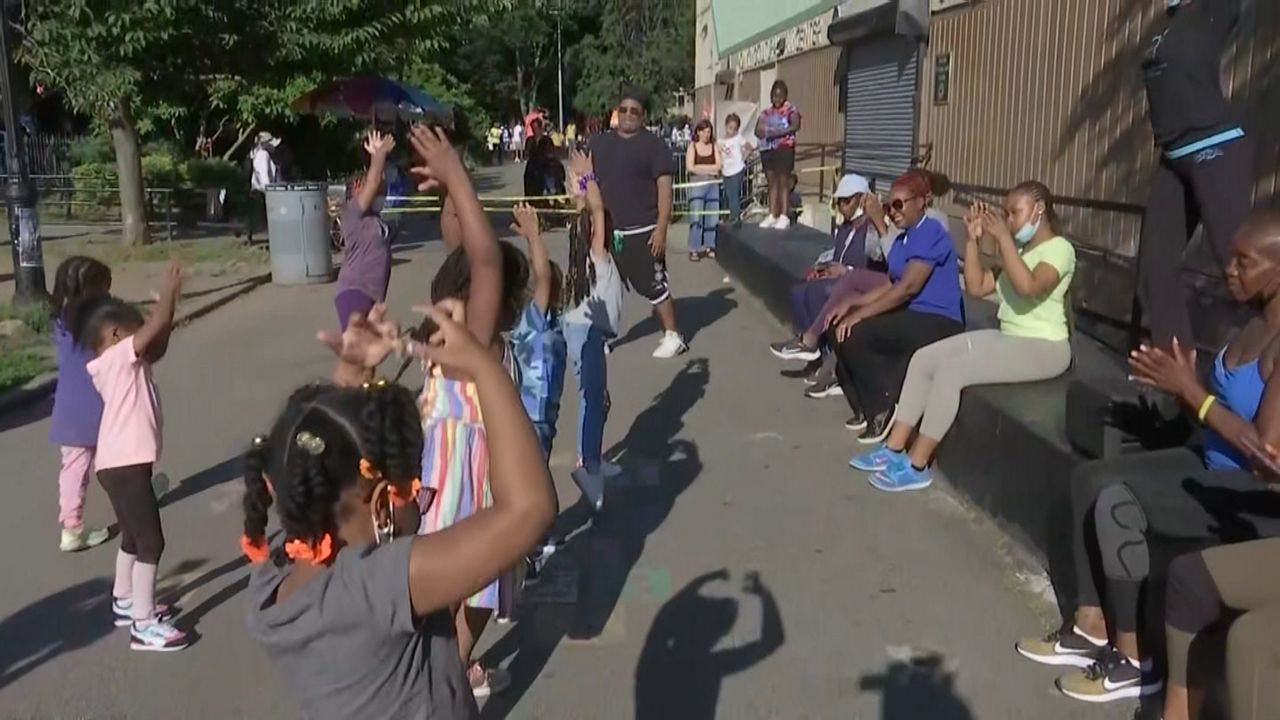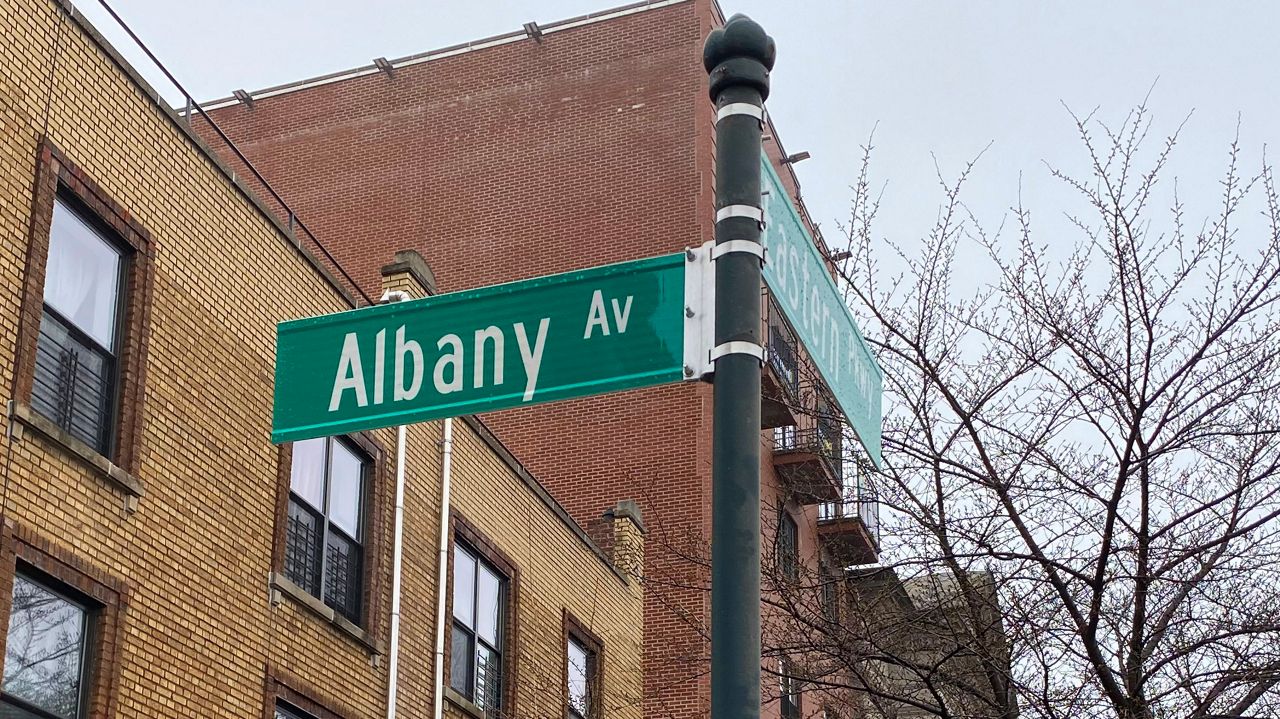Summer squash, kale, herbs and strawberries grow in squat planting beds in the small community garden sandwiched between an empty lot and a USPS facility in far eastern Brooklyn.
Though only in operation for a few years, the garden has become a beloved social space in this corner of East New York — and a productive hub for new local gardeners. More than 30 families grow food there, and the site has been a popular location for distributing clean soil to aspiring cultivators in the neighborhoods around it, according to Ana Aguirre, the executive director of United Communities Center, a local nonprofit that operates the garden.
Two weeks ago, however, Aguirre received a call from the city: The site would need to be vacated by the end of the summer, as it was slated to be paved over into a road in preparation for construction of a low-income housing complex on the lot to its north. Aguirre said the city had no alternative sites proposed for the garden, and did not offer any resources to gardeners to rebuild their planting beds next season.
“Treating residents like that — picking up the phone and letting us know we have to leave in a month and a half — is disrespectful to the community,” Aguirre said. “Especially with this administration, that is focused on eating healthier, supporting efforts by community gardens -- there's an inconsistency here.”
The episode highlights New York City’s ongoing struggle to build sufficient affordable housing as it experiences the highest rents in its history, while balancing that with the long standing needs of many neighborhoods for more green space and access to healthy food.
“Developers are everywhere in the community, creating these imbalances in the social network,” Aguirre said.
In a statement, Vincent Barone, a spokesperson for the Department of Transportation, which owns the garden site, said the city is now planning to let the garden remain at the site through the end of the year, to finish its growing season.
“DOT is proud to have worked collaboratively with the Wortman Avenue Community Garden to establish their current site,” Barone said. “The agency will explore options for an alternate garden location to accommodate a nearby housing proposal.”
The garden, opened in 2019, is one of several operated by UCC, including a larger operation near its headquarters that hosts youth education camps, compost piles and hoop houses for year-round growing.
A lot of education and outreach goes into creating a new garden site, said Iyeshima Harris, the co-director of UCC’s farming programs. She and her staff teach residents how to collect food scraps for compost, maintain gardens and care for trees on their blocks.
“We just have to tell the gardeners the sad news: This is going to be the last grow season you have at this site,” Harris said.
The Wortman Avenue garden has been an important resource for local residents, some of whom live in the nearby NYCHA Pink Houses. The area is at least a 30-minute walk to the nearest subway station, and has one grocery store within a mile radius.
“If you go to that area, there's not much social spaces like parks and gardens and stuff like that,” Aguirre said. “It’s one of the most isolated areas in East New York.”
The site has been in development limbo for nearly seven years as it waits for approval from the city to proceed to the land-use review process, according to Ben Shavolian, the owner of Shelter Rock Builders, which is planning to build the affordable housing complex there.
Shavolian said he knew the city was planning to allow UCC to have a free, year-to-year lease to use part of the site as a garden until it was approved for construction. But he found out three months ago that approval was near, while Aguirre said she only learned that earlier this month.
In the meantime, he said, the site has cost his firm hundreds of thousands of dollars each year in design, taxes and maintenance.
Shavolian said he understands the frustration over the loss of the garden, but that the street is required by city regulations, such as for emergency access to the 206-unit development. If the city had wanted to trade lots with him, he said, and give him somewhere else to build while turning the current site over to more green space, he would have been interested.
Current plans for the site include space inside the development for trees and greenery. Shavolian said that they might consider turning that area into a garden for building residents.
“It’s a very tough decision,” Shavolian said of displacing the garden. “I didn’t give the lease out. But they had to understand, it's a year-to-year lease.”
The development plan has to be approved through the city’s required review processes. Melinda Perkins, the district manager for the local community board, said she expects to press Shelter Rock on the loss of the green space, the affordability of the units and whether adding so many units is necessary in a part of East New York with minimal transit access or necessities like grocery stores.
At the end of the day, Perkins said, the city does need more housing, as long as it meets the community’s needs.
“We haven't had a chance to beat this one up yet,” Perkins said in jest. “It’s a balance. It’s a hard balance sometimes.”
Aguirre said she has tried to get the ear of the area’s councilman, Charles Barron, but that he has not responded. A representative for Barron did not respond to multiple requests for comment.
Aguirre said she is concerned that East New York is struggling to find the right mix of truly affordable housing and sufficient green space since its rezoning six years ago.
If you don’t, she said, “then you will have an area with just buildings and no social spaces.”
“The question is, what kind of community we want to build, and who makes those decisions?” she said.









